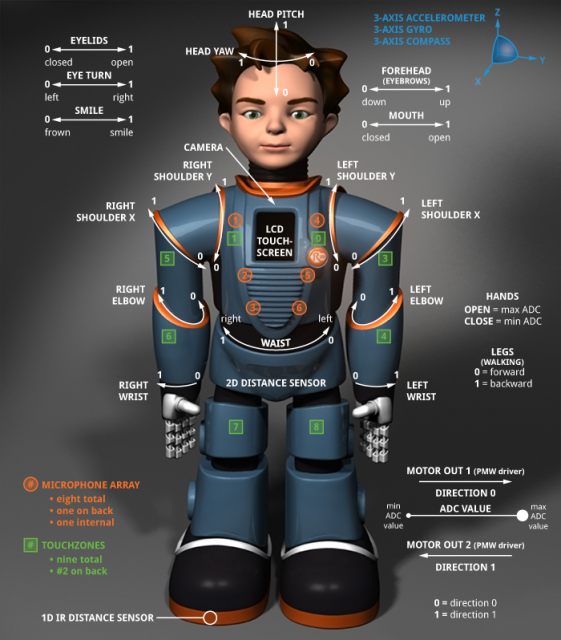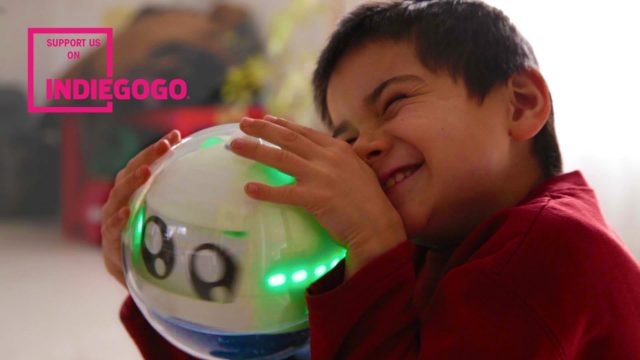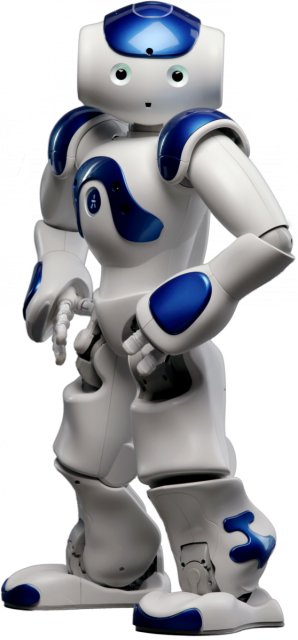Robotic playmates

Autism spectrum disorders are a group of developmental disorders that cause lifelong disabilities. They affect people’s ability to communicate, to interact with others and to understand social cues. Affected persons have difficulties recognizing body language, making eye contact, and understand other people’s emotions, symptoms that hurt the individual’s ability to function socially, at school or work, or other areas of life
One area with potential for aiding the treatment of diseases and disorders related with the nervous system is robotics. Robots have already been used in rehabilitation and therapy for physical deficits such as stroke and partial limb paralysis; however, individuals with autism rarely require this type of physical assistance but social assistance would be a desirable help. This new research field is termed socially assistive robotics 1.

Recent research has found that children with autism are more comfortable interacting with robots than with humans, in part because robots are more predictable and can be controlled by them. With socially assistive robots, the child may be more readily engaged without feeling overwhelmed. Experts also say teaching social skills to children with autism requires frequent repetition and everyone knows these machines are great at repetition, saying things exactly the same way each time over and over again without getting frustrated or tired. Finally, robots are often more approachable than people for children with autism, they are cheaper than professional help and can work 24/7 without complaining. We are starting to see the development of social robots that can be great tools to help children with autism under the supervision of therapists. Evaluation of actual robots as autism therapy tools often report increased engagement, increased levels of attention, and novel social behaviors such as joint attention and spontaneous imitation when robots are part of the interaction.
Different humanoid robots have been already designed to engage children with autism and deliver research-based lessons that teach social behaviors. They are exciting and affordable tools for educators, therapists and parents. For example, the robot is exposed to situations that children with autism may have trouble handling, like loud music, bright lights or strong smells. It then tries to communicate what it needs to be more comfortable: asking someone to turn down the radio, shut off the lights or move the air freshener with that pungent smell to another place. Then, the child can learn what to do in a similar environment instead of having a tantrum.

These are some of the most recent robots proposed to help families with autism 2:
-
Nao is a product of the French company Aldebaran Robotics. It is designed to be personalized: add content, using a variety of capacities, enriching its personality and even developing new skills and know-how. Its tasks are semi-autonomous education applications derived from various behavioral approaches and models (ABA, PECS, TEACCH, DENVER, SCERTS). Nao prompts the child, waits for the appropriate response and provides a reward when the response is correct or, when the response is incorrect, encouragement and a clue.
-
Milo is fabricated by Robot4Autism and it is capable to teach elementary and middle school age children the meaning of emotions and expressions, and how to display appropriate social conduct and responses. It speaks 20% slower than an average human and has a limited range of facial expressions making it easier for the child with autism. The robot delivers research-based lessons that help to understand and imitate social behaviors.
-
Leka from IndieGogo is scheduled to be shipped in early 2017. Its goal is to help these children become more independent and improve their motor and social skills. It is an interactive and multi-sensory smart toy, offering children with special needs the ability to play fun and educational games that motivate social interactions, increase motor, cognitive, and emotional skills, and stimulate autonomy. Based on a child’s characteristics, users can customize the level of difficulty and how much guidance children get for each of Leka’s games. Progresse of the children are stored in the cloud.
-
The Darwin-OP2 is a humanoid robot created by Chung Hyuk Park, an engineer at George Washington University. It is an affordable, miniature-humanoid-robot platform with advanced computational power, sophisticated sensors, high payload capacity, and dynamic motion ability. This robot can interact with children with autism by playing soccer or dancing, and performing other activities. It has a monotone voice that can be used to tell the children basic messages at the same time that performs different activities. For the child, it is a companion that is less confusing and intimidating than a human partner.
-
Buddy, the personal robot, has been designed by Blue Frog Robotics. Buddy protects homes, offers assistance in the kitchen, entertains the family with music and videos, acts as a calendar and alarm clock and interfaces with popular smart home solutions, among many other activities. For autism, its software is a group of apps that help to communicate, interact with other children and improve autonomy.
All these robots can be personalized and adjusted to each child’s individual learning goals, motivators, internal states and personality. They track each child’s performance and they are making therapy easier, more efficient, and more accessible.
References
- Scassellati B, Admoni H, Matarić M (2012) Robots for use in autism research. Annu Rev Biomed Eng 14: 275-294. ↩
- Crowe S (2016) 5 Promising Robots for Kids with Autism. Robotic Trends ↩